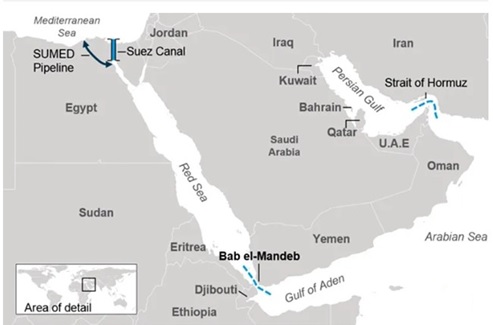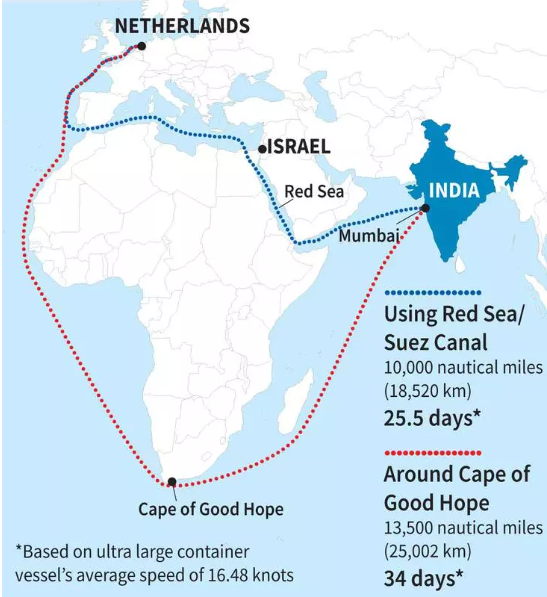900 319 0030
enquiry@shankarias.in
Recent attacks on commercial ships near the Red Sea amidst the ongoing Gaza war impacts India’s global trade.
To know about Red Sea, click here

 Costlier imports – Final products could turn dearer and it could affect the plans to reduce pump prices of petrol and diesel.
Costlier imports – Final products could turn dearer and it could affect the plans to reduce pump prices of petrol and diesel.Gross imports of crude oil and petroleum products as a share of India’s gross imports in value terms was 25.8% in 2022-23, and 22.6% in the 1st half of the current fiscal.
What lies ahead?
References